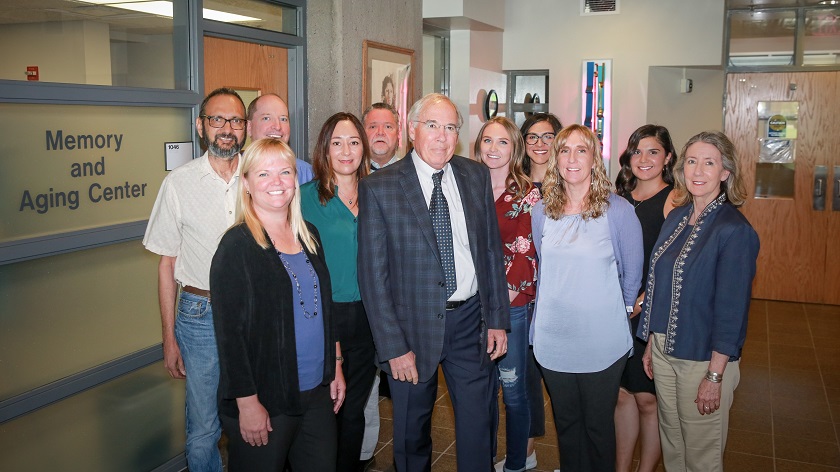
I am happy to give an update on the progress in both Alzheimer’s research and on the work at the University of New Mexico new Alzheimer’s disease research center (NM ADRC). There is a collective sense that research into Alzheimer’s disease is on the cusp of major breakthroughs. In our ongoing attempts to understand the disease, to distinguish it from normal aging, to diagnose the disease as early as possible, and ultimately to treat this disease, which has emerged as the most common disorder of the brain.
Although Alzheimer’s disease (AD) was described at the beginning of the 20th century, earnest scientific research shedding light on this disease and its causes began only at the end of the century. The dawn of the new century ushered in a new era of sophistication, in our understanding of the fundamental causes and risk factors of AD, in clarifying how it relates to aging, in diagnosing the disease, and in developing therapeutic interventions. While we have not yet reached the "finish line," there is a justifiable sense of optimism that we have finally turned a corner and are entering the home stretch of the long race to find a cure.
The Alzheimer’s Disease Research Center (ADRC) at New Mexico was established in August 2021 with a grant from the National Institute of Aging. It was an exploratory ADRC, one of 4 new centers to join the 30 existing centers. It was during the last quarter of a century that the field at large made its major breakthroughs into AD, and our ADRC will be an active participant in all aspects of this global effort. Among the many achievements of the ADRCs has been efforts to characterize the disease, to identify risk factors, to identify genetic links, to use imaging techniques to pinpoint the earliest brain sites affected by the disease, and to use animal models and cells in a dish to understand the disease’s biology. We are on the cusp of being able to replace costly PET imaging studies and invasive lumbar punctures with measurements of Alzheimer disease proteins in blood. This will revolutionize our ability to diagnose the disease at earlier stages. Our center is a leader in these studies to identify biomarkers.
Most recently, our investigators have begun exploring new diagnostic tools of, and novel therapeutic interventions against, two new biologic pathways that are now thought to underlie the most common forms of Alzheimer’s disease. One pathway resides in the brain’s immune cells, which seem to abnormally respond to the pre-existence of disease. The other pathway resides in neurons, where it governs the complex process of orderly trafficking of proteins. When defective, this pathway can result in "traffic jams" within neurons, which is now known to act as a trigger of the disease.
Besides these research efforts, a second broad mandate of our ADRC is a focus on patients and their families. We work closely with the Department of Neurology, home to expert clinicians, many of whom are key members in our ADRC, in the diagnosis and treatment of AD and related disorders. In parallel, we work with the Department of Pathology, whose world-class Neuropathologists are ADRC investigators and aide in the final diagnosis of AD and related disorders. Just as importantly, our ADRC investigators will be able to participate in clinical trials, and of patient outreach, advocacy, and education. This is particularly important in New Mexico, which has a large underserved rural population.
Finally, the third mandate of our ADRC is to inspire, educate, and train a new wave of investigators in our ongoing battle against AD and related disorders. We offer many training opportunities to students at any stage: from high school students, graduate and medical students to residents and post-doctoral fellows, through junior and even senior investigators or physicians who are interested in joining this battle. We support a monthly lecture series are establishing and a Development Award program.
Gary Rosenberg, MD
